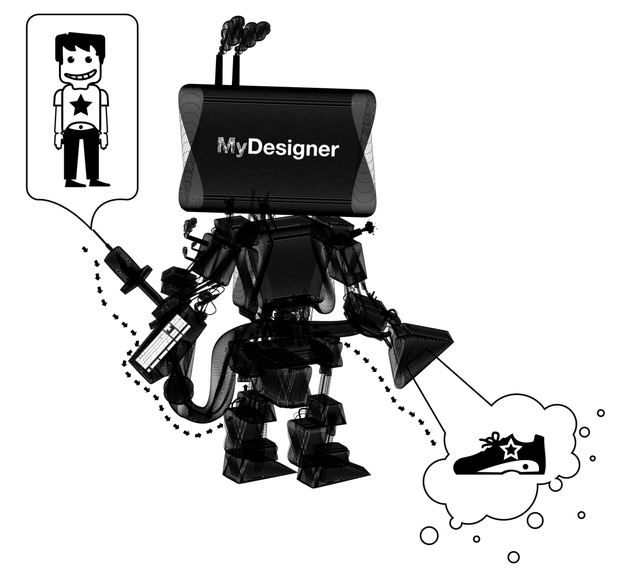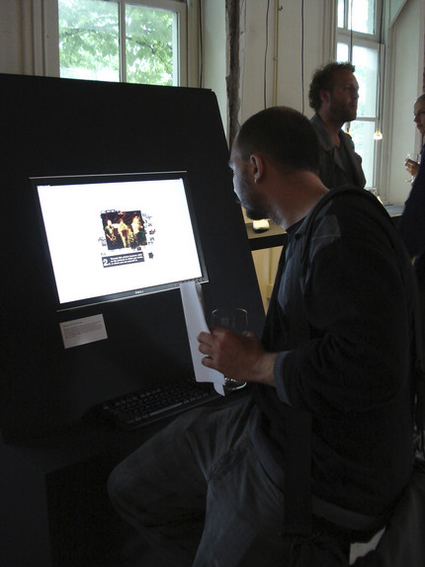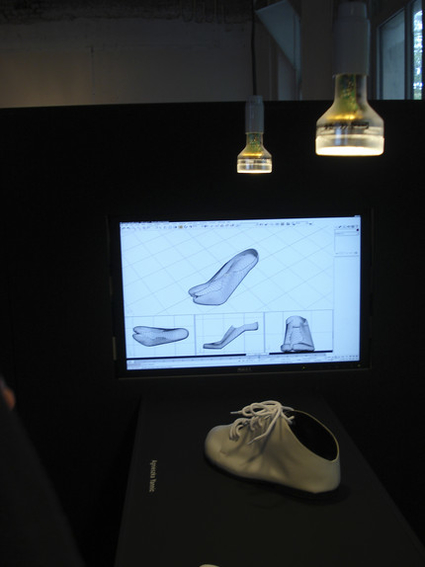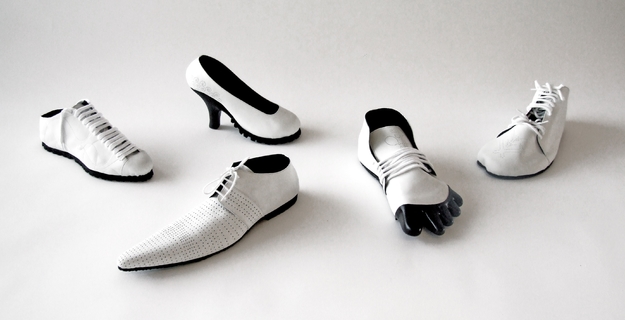This project experiments with a design production system where:
01. You generate a personal brand-like image by answering a visual questionnaire,
02. The answers are expressed as form variables, all blending into one, unique combination...
03. Your product.
Current design condition
Today's system of consumption is built upon ever-growing product stocks and for ever-multiplying markets. It offers sometimes "new" products, answering true needs or solving problems, but all too often it spits out barely distinguishable versions of the same product.
Fashion and technological cycles have now reached a state of mass noise. Like the exponential growth of tempo in a beat. To cope with this noise, and address the rising sense of individuality in markets, new production models are lending a creative role to users, with the aim of letting the individual shape his or her design.
At first glance, increased freedom of choice for user expression seems a noble achievement. The resulting products -- generally clothing, accessories, portable devices or cars -- are supposed to be directly linked to the individual and meant to be shown in public. These are identity-related products.
Alternative design condition
MyDesigner presents an alternative model to the current "customization" phenomenon. This phenomenon offers products that have two sad characteristics: Firstly, so-called identity-related products don't actually say much about the identity of an individual. At best, they say: this individual subscribes to some brand. Second, product "customization" is limited and unsatisfying: changing the color or material of the same universal shoe leaves us wanting more.
MyDesigner exists between the superficial "customization" phenomenon and a "Do It Yourself" scenario, where users run the show and designers disappear. With MyDesigner, the role of the designer shifts from the making of a single piece, to the creation of a wider system of possibilities around a product. MyDesigner is not user-generated. It is user-based.
Therefore, MyDesigner should be considered more of a system than an immutable product, and can be understood by 3 phases:
01. A visual questionnaire meant to generate a "You-Brand", were the user can define his / her particularity as an individual (beliefs, wants, moral positions etc...),
02. An interface that will convert the user's particularities into shape variables which will generate a virtual version of the desired product, and
03. The final product expressing the individuality of the user through a specific use of shape semantics, just like a personal flag.
Peer-to-Peer production
My investigations continues by re-establishing direct exchange between individuals. Mechanization has brought down the number of specialists, or people with unique knowledge and unique skills in specific fabrication processes, namely: craftsmen. I believe there are many ways of enriching the position of craftspeople by embedding them with new methods of creation.
Basically, each of us is a key to global production, which means that each of us is needed at some point in order to fulfill the desire of someone else. Automatization and mass production rely on the proactive use of a massive human effort, based on previsions of what "possibly" could suit the need of a maximum of individuals at any given time.
New modes of communication lead to what we call "Peer-To-Peer," which is about re-investigating one-to-one communication, but on a global network. Although it is virtual, we now have the possibility to know what is needed, by who and when.
Again, if we understand that each and every one of us could be useful to someone else, and we have the possibility of easily and rapidly conveying services and demands through digital networks, it is our primary goal to create systems of management and manufacturing, to organize and facilitate such networks of production as an alternative to the slow, inaccurate and disastrous process of mass-production.



